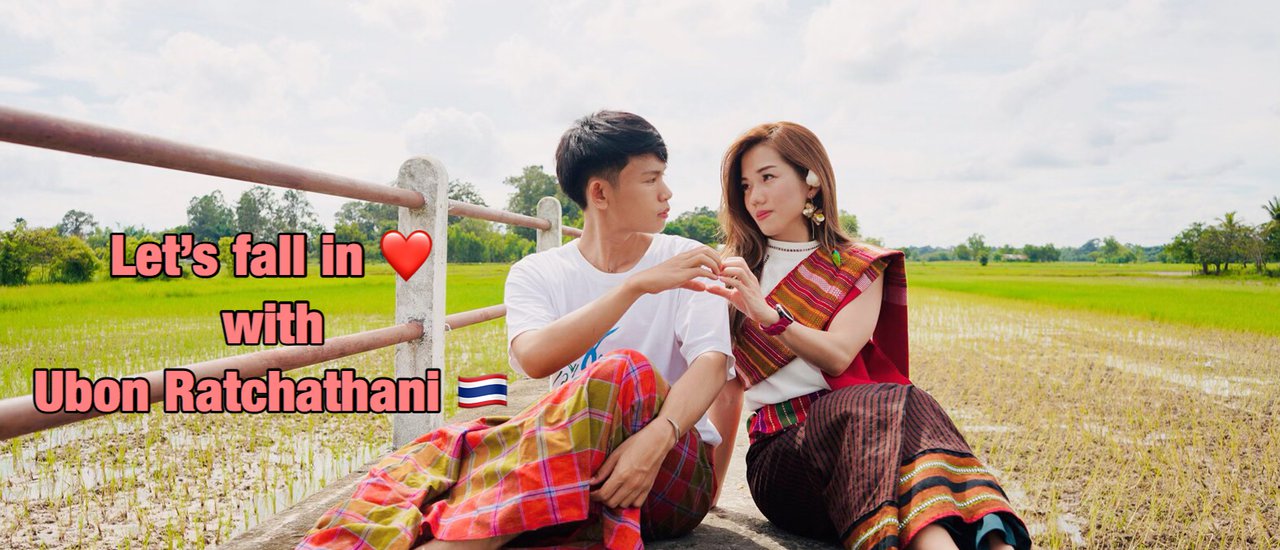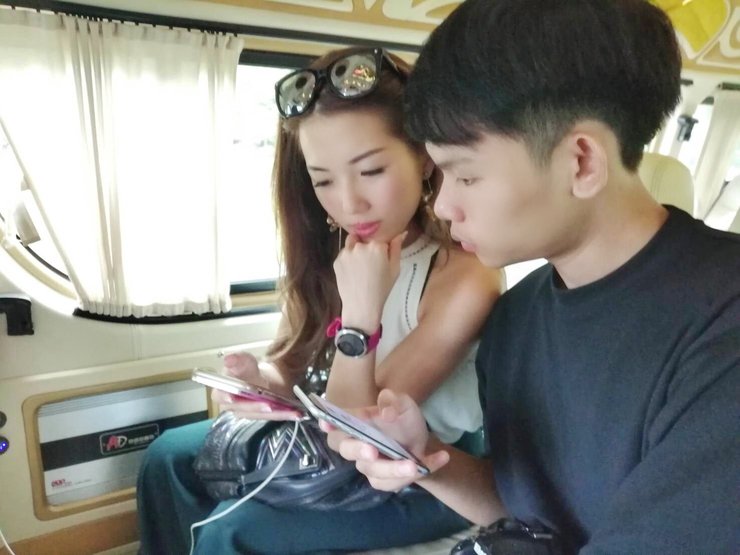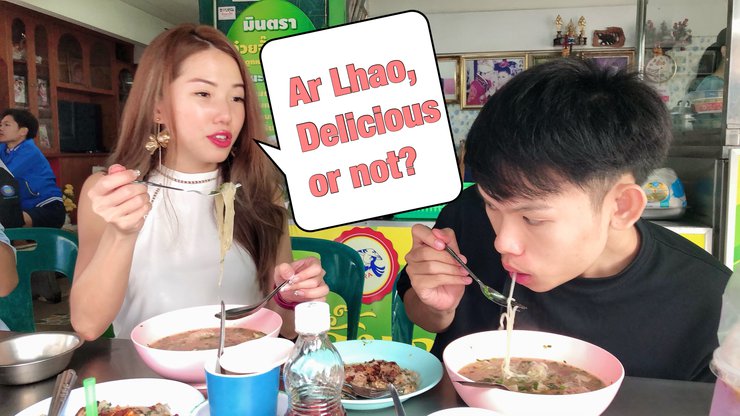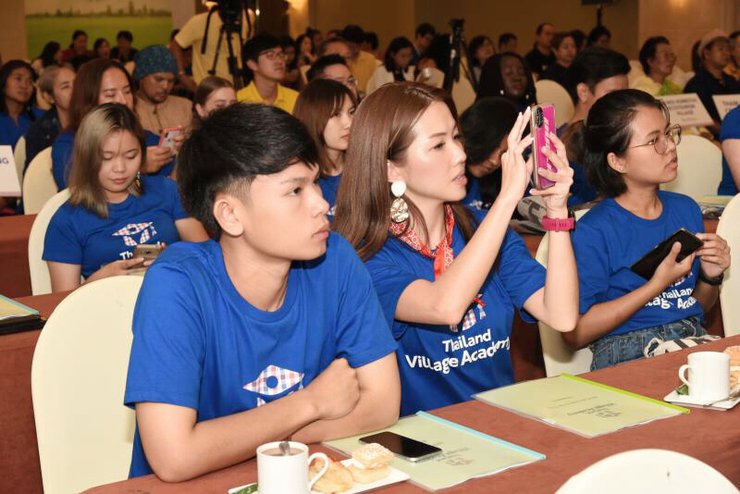
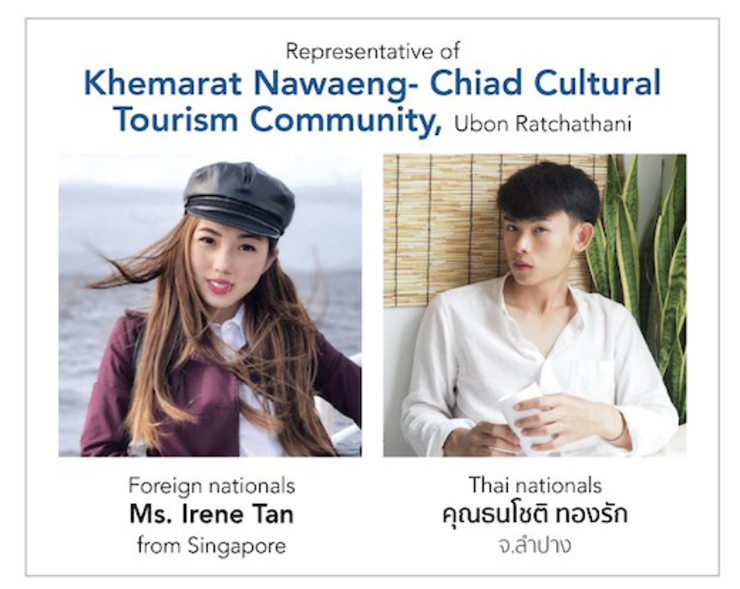
How it all happened: The ‘Love Story’ between Ar Lhao and me...
It all started when we were both selected to be one of the 44 finalists to join the Thailand Village Academy Competition. The campaign, called Thailand Village Academy selected 44 finalists (22 foreign nationals and 22 Thais) from 17 countries to create travel stories for 22 villages across Thailand. Together with Ar Lhao, both of us represent the village Ubon Ratchathani, Khemarat Nawaeng – Chiad Cultural Tourism Community.

Ar Lhao and me
His name Ar Lhao sounds like the word “Ah Lao” that we used to call our husband in the Hokkien language in Singapore. Fate has brought us together in this competition, and we became good friends fast. We make an excellent team to work towards the same shared goal, which is is to create fantastic content to highlight Ubon Ratchathani to the world. From the first day, we arrived in Ubon; I have fallen in love with this mostly untouched and unspoiled tropical destination. Ubon Ratchathani comes across to me with great potential to be the next unique honeymoon destination. Young couples looking to get off the beaten track for their honeymoon will find Ubon Ratchathani to be an ideal pick. With that in mind, I will like to create this romantic love story of Ar Lhao and me to inspire travelers to visit this up-and-coming travel destination.

Ubon Ratchathani is one of the four major cities of Isan. Located on the banks of the Mun River, the city is also known as Ubon (อุบลฯ) for short. The name means ‘royal lotus city.’ Perhaps is underrated as a travel destination, most travelers fail to venture Ubon Ratchathani and skip over this region on their way to Laos – and they are missing out. Even in a country as touristy as Thailand, a rural city like Ubon Ratchathani proof that you can still see Thailand off the beaten track and experience what day-to-day life in Thailand is like away from the crowds.
There is simply something magical about Ubon Ratchathani. Many hidden gems are awaiting your discovery in Ubon - from the majestic Pha Taem National Park, the ‘glowing temple’ Sirindhorn Wararam Phu Prao Temple, and the authentic community homestay. Besides, you need to visit this natural wonder of Ubon, Sam Pan Boak, also impressively known as the “Grand Canyon of Thailand.” The city is also a beautiful place to witness the annual candle festival, a charming Buddhist celebration. Read on to discover how you can fall in love with this enchanting sanctuary.

Ubon Ratchathani is around 390 miles (627.6km) from Bangkok. You can travel by bus, train or take a direct flight from Bangkok. The fastest way to get to Ubon Ratchathani from Bangkok is by flying, and the flight duration is an hour. Both Thai AirAsia and Thai Airways have daily flights connecting Bangkok to Ubon Ratchathani.
Another alternative is to get there by bus. The journey to Ubon Ratchathani from Bangkok can take about 10 hours in a modern and comfortable bus with air conditioning. The bus services are offered at the Mo Chit Bus Terminal (Northeastern Line) every day.

Hua Lamphong Train Station
However, I will like to recommend train travel to Ubon Ratchathani. There is eight direct train service from Ubon Ratchathani to Bangkok, and in Bangkok, the central train station is Hua Lamphong Train Station. The journey by train from Bangkok to Ubon Ratchathani varies from 8.5 hours to 12 hours. Traveling by overnight train in Thailand is an unforgettable adventure. During the trip, you will see some of the most beautiful mountain views on the route from Ubon Ratchathani to Bangkok, particularly in the section of the North-Eastern Line between Nakhon Ratchasima and Ayutthaya. This scenic train routes will make you discover Thailand in a new way! You will pass by lakes, mountains, temples, and a magnificent hillside Buddha visible only from the train. You can watch this 1-minute video to find out more about my first-class train experience to Ubon Ratchathani.

Checking out the best places of interest to visit in Ubon
Mintra Restaurant
Guay Jub Yuan
Our train arrived at Ubon Ratchathani station at 6.45am. We were starving and first thing first, we need our breakfast to replenish the energy level before we can explore Ubon Ratchathani. Breakfast was at Mintra Restaurant, which is renowned for serving the province’s signature dish, Vietnamese noodles Guay Jub Yuan. Guay Jub Yuan is a popular Vietnamese dish to try when you are here. I personally love the hot peppery soup taste as it reminds me of Singapore’s local food Bak Ku Teh. This Guay Jub Yuan version has a unique flavor due to the use of local ingredients from Ubon Ratchathani. Ar Lhao and I love Guay Jub Yuan, and I am sure you will love it too when you are here.
City Pillar Shrine
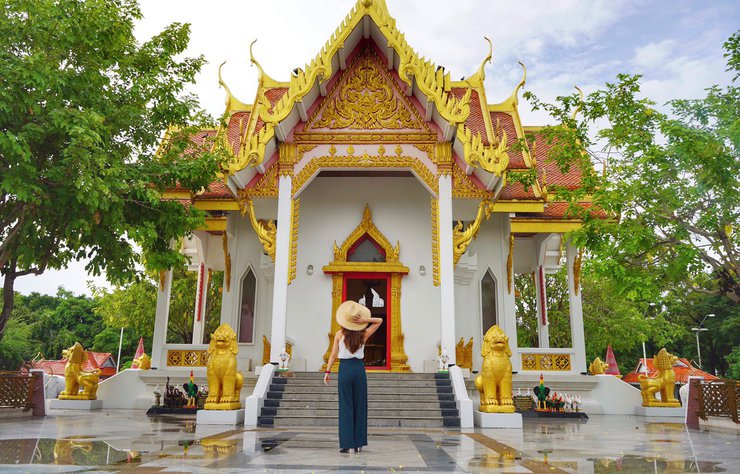
With the energy level replenished, I am more than ready to channel the Instagram goddess within me. The exterior of the City Pillar Shrine has lovely white polished walls with an alluring hue of gold that will make your Instagram pictures look good.
The City Pillar Shrine (San Lak Muang) is located in the central Thung Si Muang Park. Built in the 1970s, the City Pillar Shrine is part of a government campaign to have pillars in all provincial capitals. It is free entry, and the shrine is open between 5.00 a.m. to 7.00 p.m.
Sri Ubon Rattanaram Temple
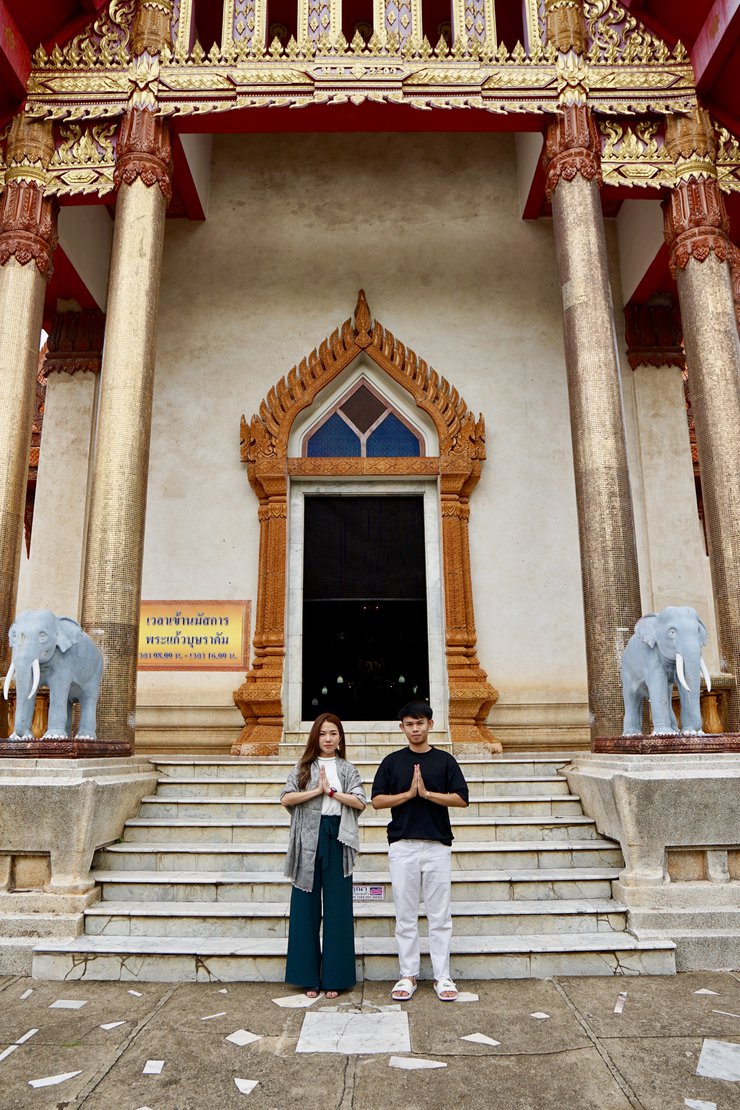
Buddhism is the main religion practiced in Thailand, so it is no surprise you can see temples in Thailand anywhere you go. Temple hopping is a must when you are in Thailand, and our next stop is to visit one of the famous temples in Ubon Ratchathani, Sri Ubon Rattanaram Temple.
Buddhism has long thrived in Ubon Ratchathani’s multitude of temples, including some as old as the city itself. The temples are as intriguing as other well-known temples found elsewhere in Thailand with some highly unusual attributes.The bòht (four-sided coordination hall) at this temple was built to resemble Bangkok’s famous Marble Temple, Wat Benchamabophit. However, we were more in awe with the 7cm tall topaz Buddha that resides within the temple’s compound. The 7cm tall topaz Buddha as known, Phra Kaew Butsarakham, was brought here from Vientiane at the time of Ubon’s founding. Carved in Chiang Saen style over a thousand years ago, the topaz Buddha is the city’s holiest possession. You just have to see it yourself!
Discover the past at the National Museum
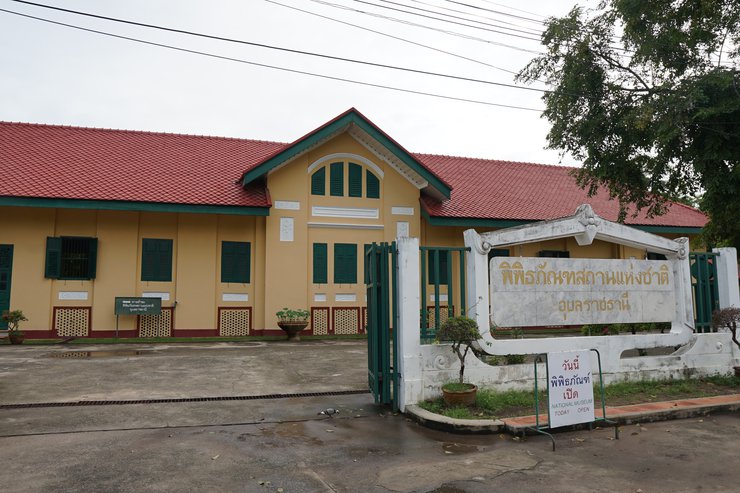
If you love history and want to know more about Ubon Ratchathani’s prehistory, then the national museum is the right place for you to visit. It is time to indulge your history habit as you will find yourself going back in time. The museum, opened in 1983, is housed in the former city hall. The charming European-style block and-concrete building was constructed in 1918 during the reign of King Rama VI before refurbished into the National Museum to welcome visitors.

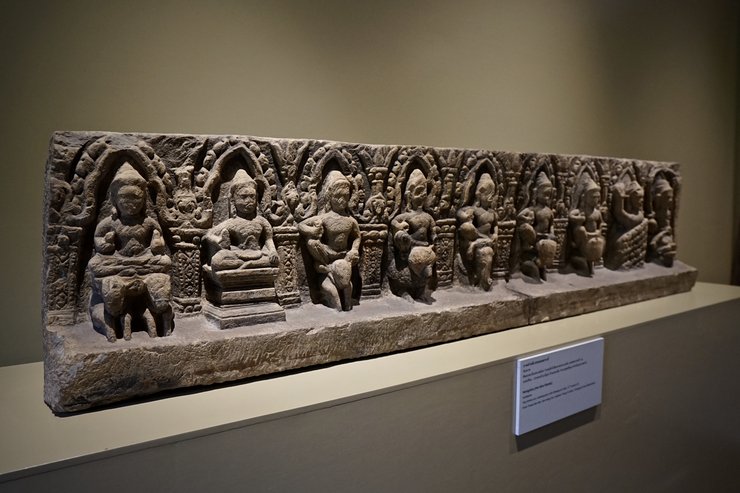
The exhibitions take you back to human history when hunter-gatherers lived in the area, into the Dvaravati period from the fifth to 10th centuries and era of Khmer rule from around the 10th to 13th centuries. The exhibition is divided into ten rooms, and each room of this rectangle wooden building represents a period in the region’s history. There is an English description, and you will have a great day together with your partner, gaining a fascinating insight into Isan’s unique heritage.
Interact with the friendly Chi-Tuan Community Locals
Next, we traveled to the Chi-Tuan community, and we received a warm welcome by our host, Mea Khea. "Mea" means mum in Thai. I affectionally call our host Mea Khea, 妈妈 (Pronounce as Ma-Ma, and it implies mum in Chinese). Ma-Ma is so friendly, and she shared with us a lot of fascinating history about Ubon Ratchathani and the Chi-Tuan community.
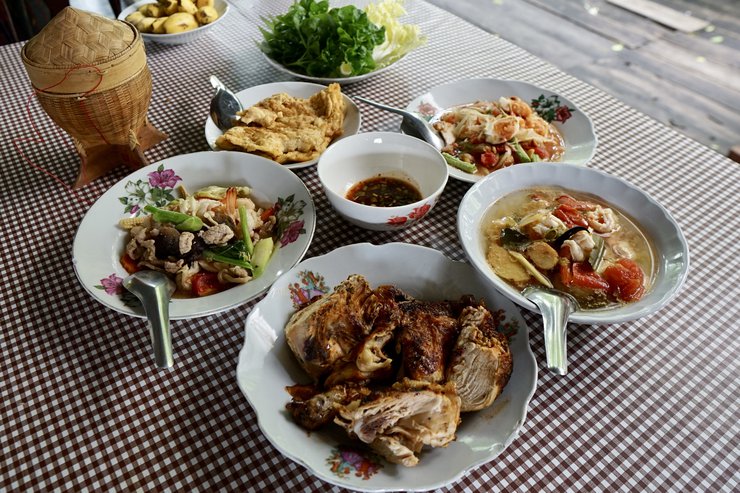
Ma-Ma has also prepared a delicious home-made lunch for us. The lunch was so delicious and I felt so at ease like home.
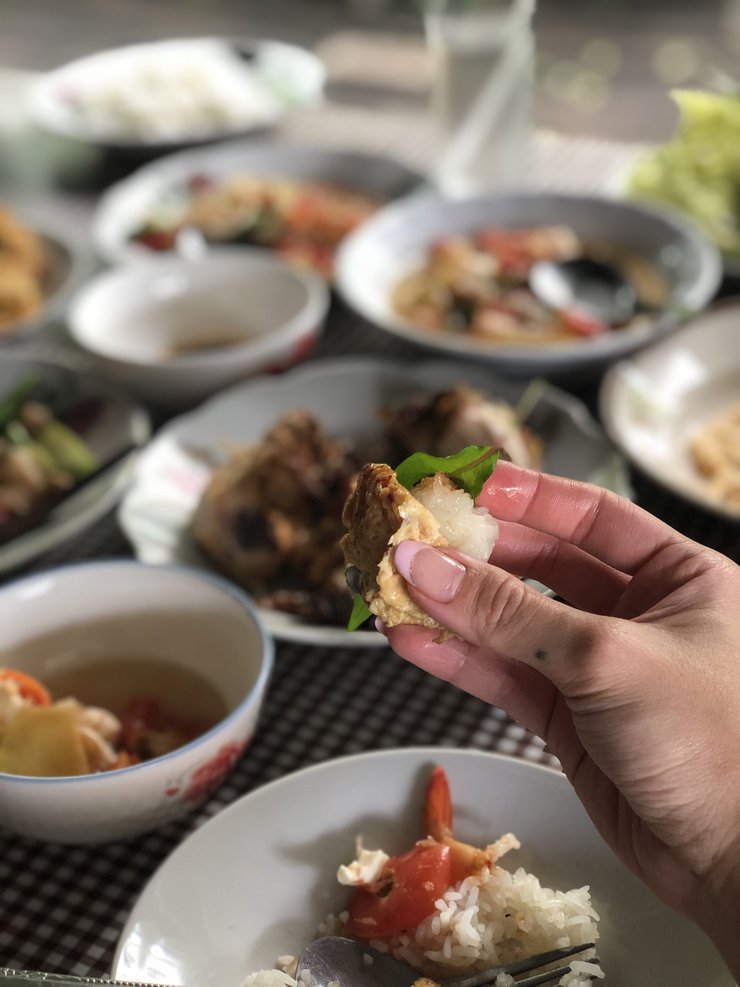
The people in the northeast of Thailand eat sticky rice at home every day. Thai sticky rice is very sticky and is a norm to eat sticky rice with your hands instead of using utensils. The way to eat sticky rice is to pick up a small amount and gently squeeze it in the right hand. You can dip the rice in the food and pop it in your mouth. I find that it is more fun to eat with the hand!


We love Ma-Ma...Khob khun kha!
About Mea Khea's Home Stay
Ma-Ma offers accommodation at her home for travelers visiting Ubon Ratchathani. The room rate per night for one person is 300 Baht, which includes your accommodation, lunch, and breakfast. 300 Baht is only SGD13! This homestay experience is so affordable. Staying at Mea Khea's Home Stay means you get to taste all these delicious home-made Thai food too! If you are interested, you can get in touch with Ma-Ma to make your reservation by calling +66 817187794.
Ma-Ma helped me to put on her traditional Isan dresses, and I feel instantly transformed to Ms. Isan. The traditional Isan clothing is so pretty, and I think it looks good on me. Do I like S̄wy (means beautiful in Thai)? Your answer can only be Yes!
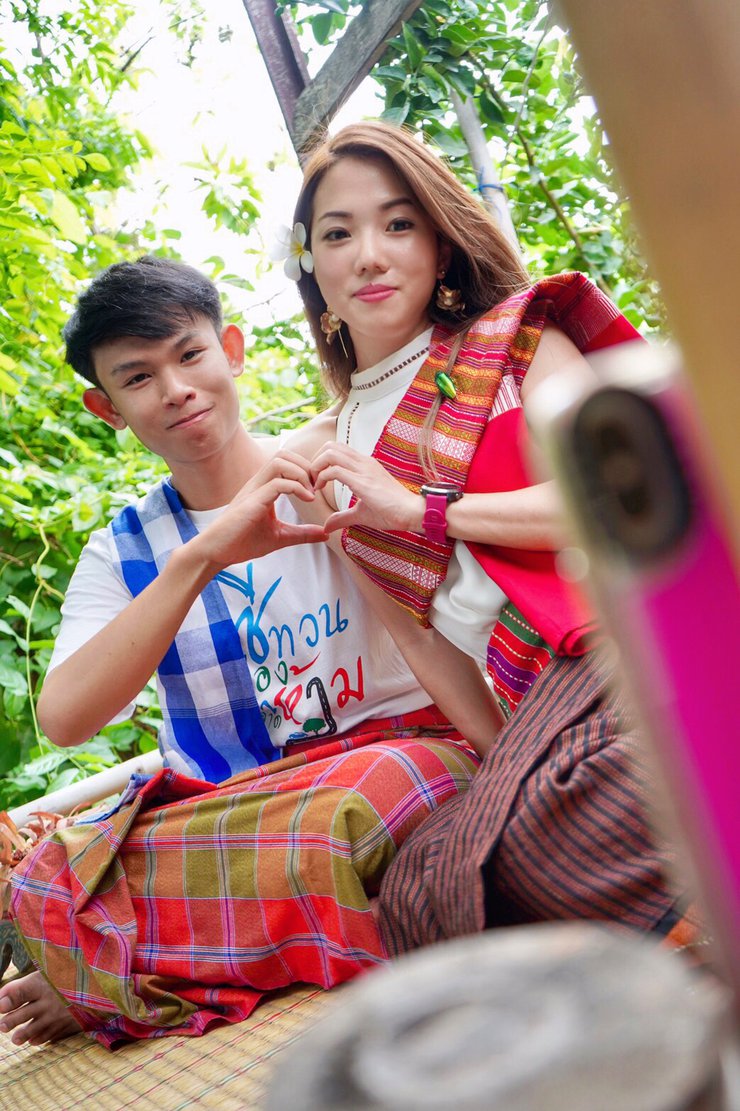
With both of us dress up with the traditional Isan clothing, we are looking more like a "couple." Ar Lhao really feels more like my "Ah Lao" now in Ubon Ratchathani. ("Ah Lao" means husband in Hokkien language).
That Suan Tan Temple

After a delicious lunch at Mea Khea Home Stay, we visited the That Suan Tan Temple. Now in our traditional Isan "couple" wear, we are ready to go and take more photos together.
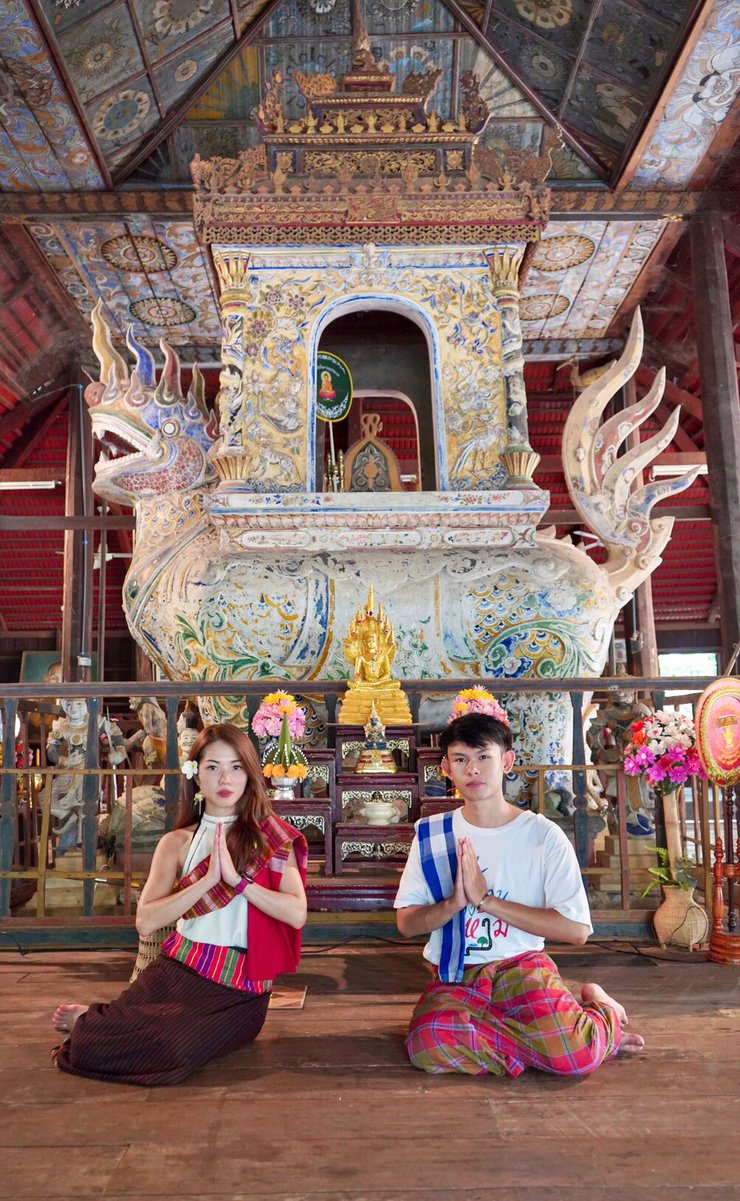
How to "Wai" Properly in Thailand
It is a common practice to Wai in Thailand. The Wai, pronounced like the word “why,” is the traditional greeting of Thailand. There are three different ways in which visitors in Thailand should Wai. The first way is the most casual version of this greeting. The second way to Wai is a bit more formal. You have to bring your thumbs to the tip of your nose and your index fingers to your forehead. The third way is the most respectful way to Wai. This formal greeting is used for the royal family, monks, and highly respected people. You have to lower your head with your thumbs in between your eyebrows and your palms at your chest.
Hodlaew Khuanoi
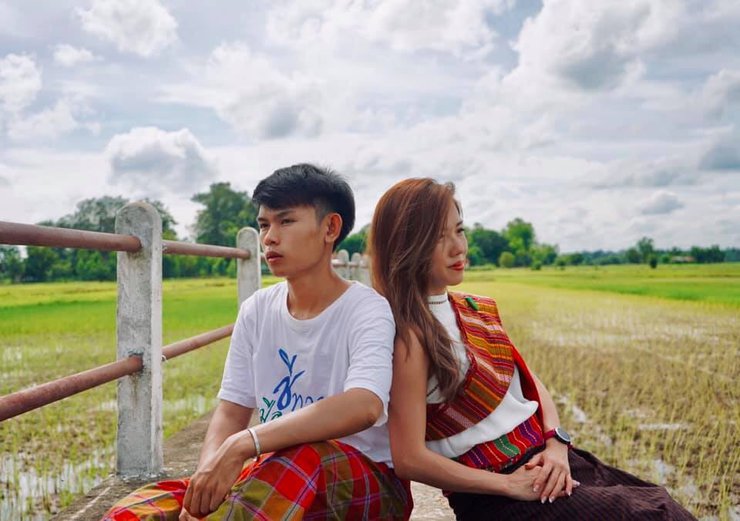
Ubon Ratchathani might be your next destination to have your Pre-Wedding Photoshoot. I love the beautiful natural backdrop of Hodlaew Khuanoi. This place is where you find the wooden bridge used to commute between Chi-Tuan community and That Charoensuk Temple.
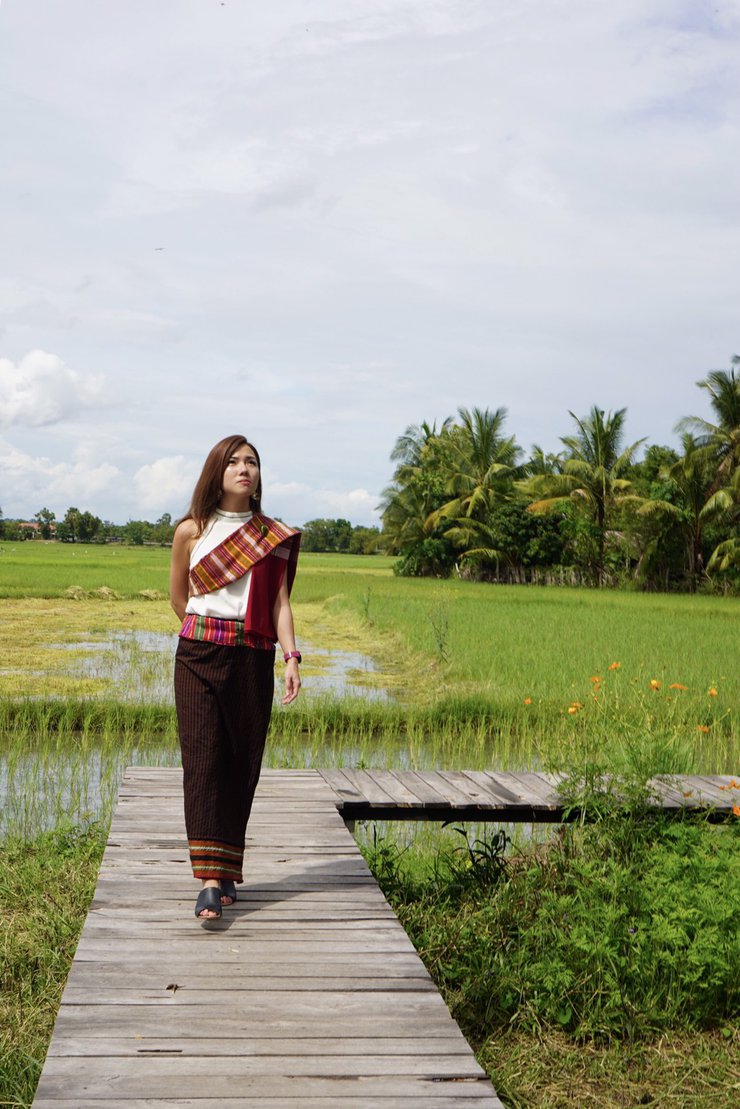
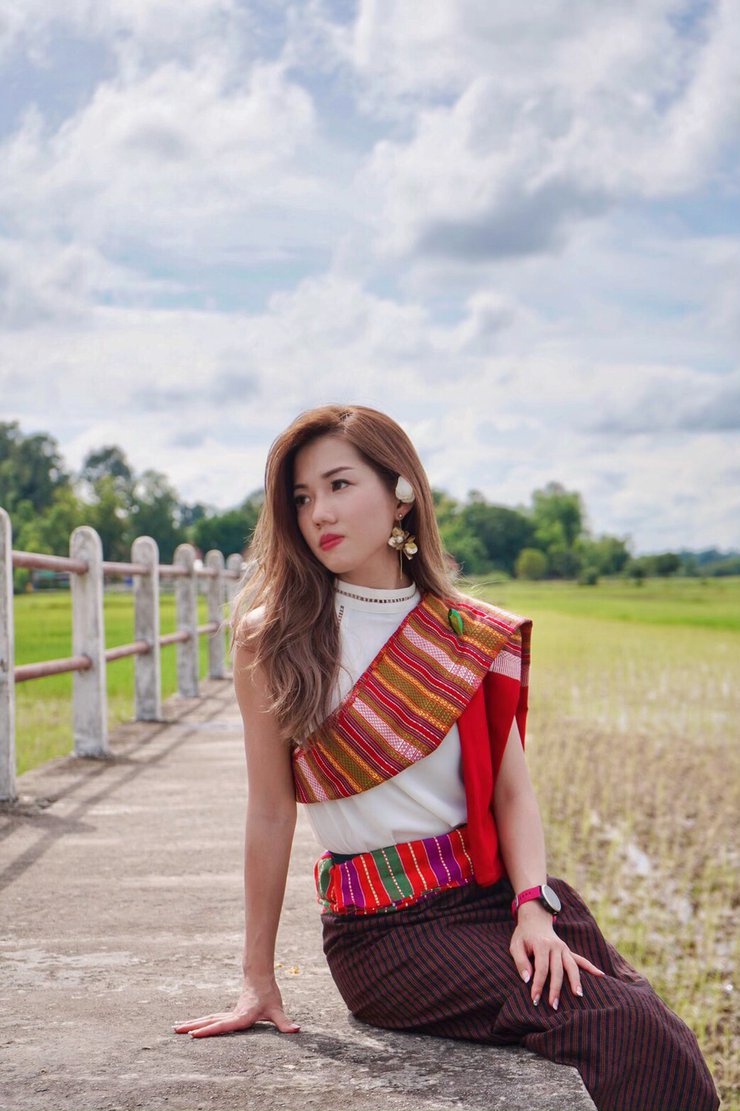
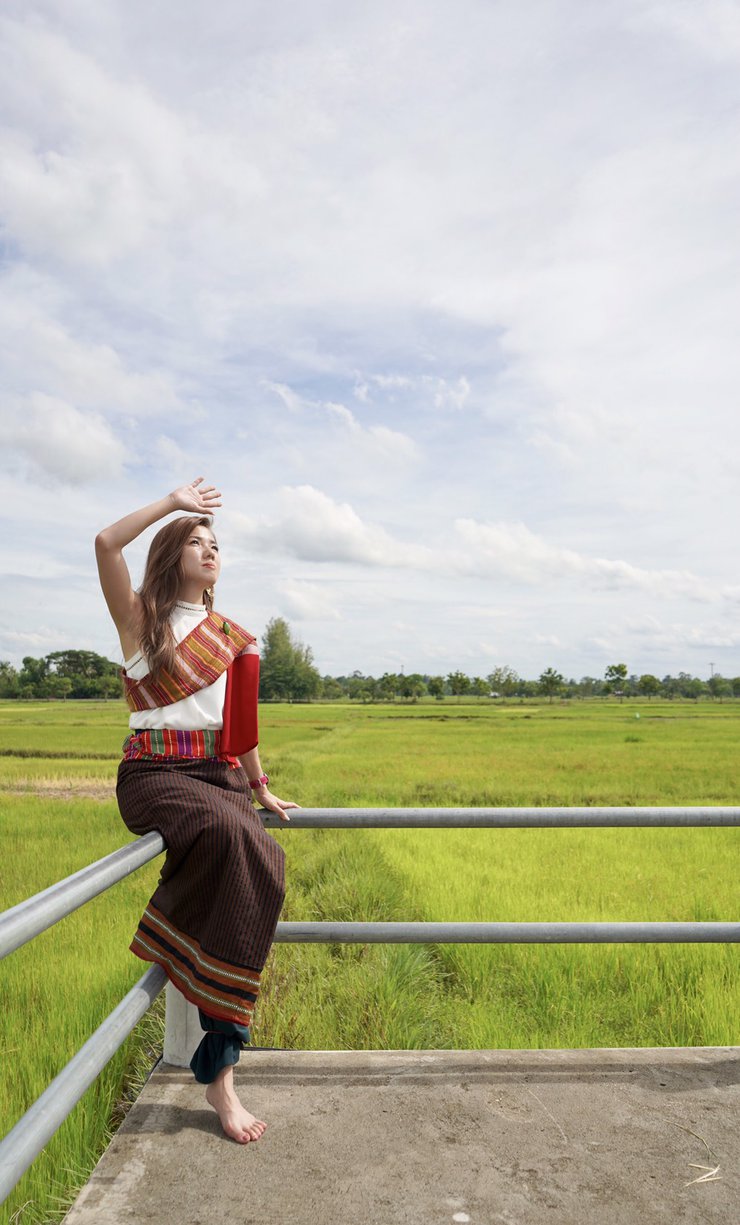
For Instagram-lovers, you are going to love this place as well. Our photographs taken at Hodlaew Khuanoi say everything. Need I say more?
Sirinthornwararam Phu Prao Temple
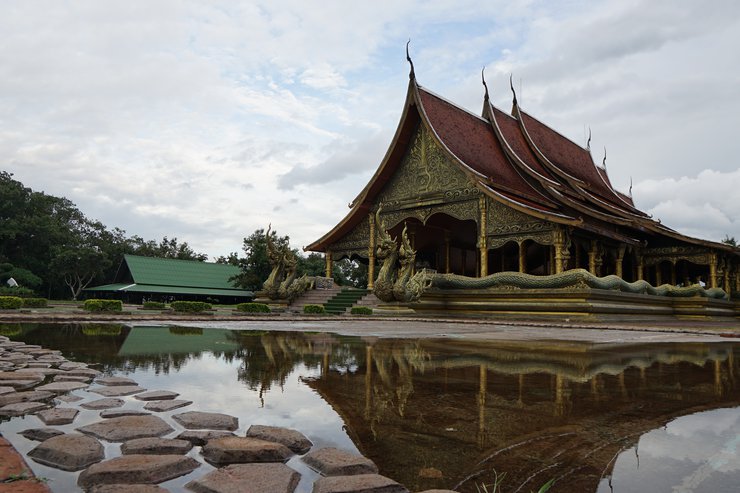
I love to travel for so many reasons. One of the reasons why I love to travel so much is to see beautiful sights. Located right across the border of Laos, you will find this awe-inspiring temple is a sight to behold.
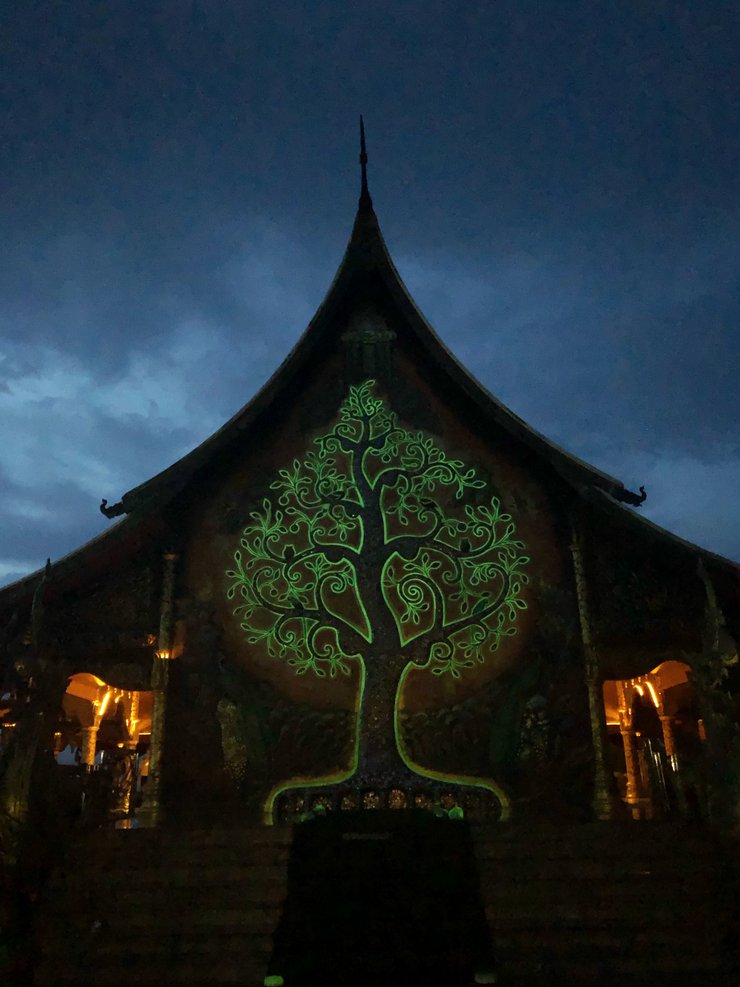
Dubbed “The Glowing Temple,” Sirinthornwararam Phu Prao Temple looks captivating with its luminous Tree of Life. The decorations on the temple grounds which resemble roots that extend from the Tree of Life will also glow after the sunsets.
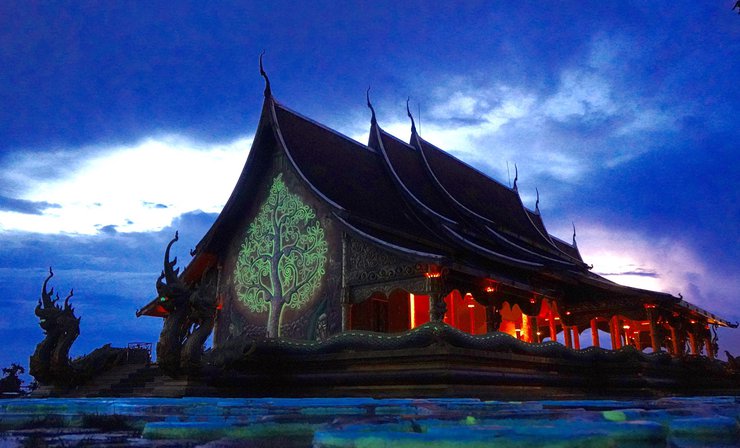
Many people will gather about after sunset to have to a glimpse of this fascinating sight to see the decorations illuminated and glow in the dark. Just remember to find your spot early for this spectacularly beautiful moment. The unique fluorescence beauty of Sirinthornwararam Phu Prao Temple is something I will never forget about this trip to Ubon Ratchathani.
Please stay with us on our #TheVillageStory journey and support #UbonRatchathani team! #ThailandVillageAcademy
Stay tuned to find out if I will find happiness in Khemmarat, Ubon Ratchathani. I will greatly appreciate if you can like and share the post. Khob khun kha!
My Other Posts on Ubon Ratchathani:
- Finding Happiness in Khemmarat, Ubon Ratchathani: https://readme.me/p/25962
- The Khemmarat Ways of Life: https://readme.me/p/26163
- All Mums of Khemmarat: https://readme.me/p/26271
- The First-Timer Guide To Khemmarat, Ubon Ratchathani: https://readme.me/p/26218
If you like to read the Thai version of our journey in Ubon Ratchathani, here are my Thai teammate Ar Lhao's posts:
ถ้าคุณอยากอ่านเรื่องราวเพิ่มเติมเกี่ยวกับอุบลราชธานีเพิ่มสามารถตามไปอ่านได้ที่
Irene Tan
Friday, July 26, 2019 3:17 AM

